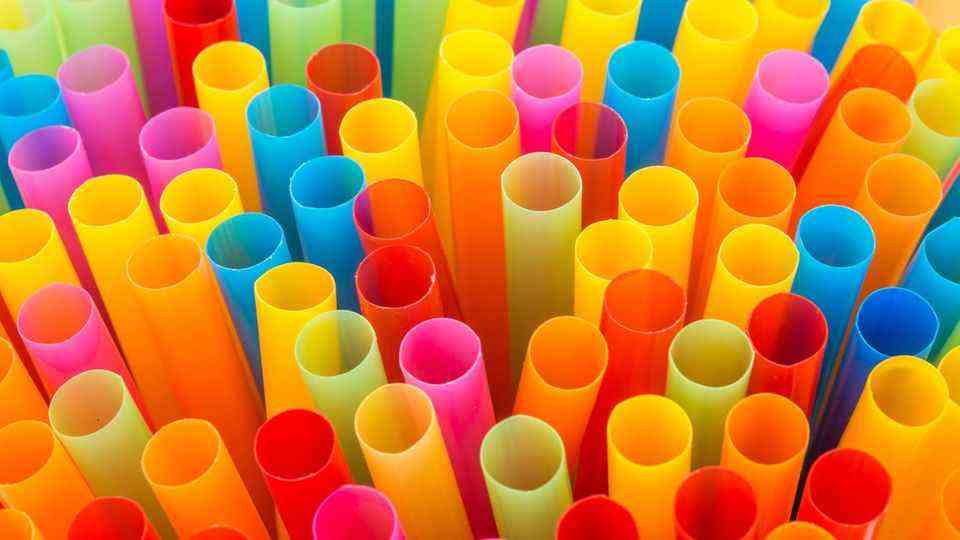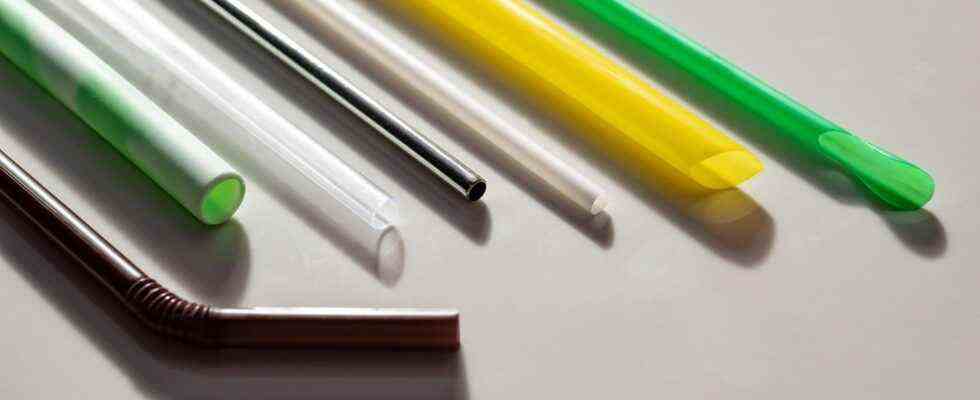Single-use plastic products may no longer be sold in the EU from 2021. For this reason, the consumer portal askgeorge.com has tested eight alternative straws made of stainless steel, glass and plastic.
Did you know that in Germany alone, 40 billion plastic straws are used every year? The bad thing is, most of it can’t be recycled because it doesn’t get properly collected by treatment facilities, and as a result ends up in landfills and incinerators. Due to storage in the open air, the light stalks are often blown away by the wind.
So it’s hardly surprising that one in seven pieces of trash picked up on a beach or river is a plastic straw. Worse still, it takes up to 500 years for the drinking straw to fully decompose. And until then, its microscopic plastic particles are polluting our oceans. So it’s high time for straws made of reusable materials. The consumer portal askgeorge.com did the self-experiment and tested eight different alternatives. All reusable straws were rated on taste, drinking experience, cleaning and sustainability. The results of the self-experiment were exclusively made available to Stern.
These are the two test winners
1. PURITY straws made of stainless steel (grade: 1.5)
They won PURITY straws made of stainless steel: They were able to convince the product tester the most. The scope of delivery included eight straws, each 21.5 centimeters long and five millimeters in diameter, as well as a cleaning brush – in a closable cloth bag. The material of the drinking straws is particularly durable and dishwasher-safe, so you can easily enjoy hot or cold, thick or thin drinks. The only downside: Tasteless drinks, such as water, are not so well suited for the stainless steel version, as you perceive the metallic taste of the material more clearly. But these straws last for eternity and are therefore ecologically valuable.
2. HALM glass straws (rating: 1.5)
They ended up in second place HALM glass straws. The scope of delivery includes a cleaning brush and four straws, each 20 centimeters long, but the diameter is also seven millimeters – meaning you can drink more liquid at once. Just like the stainless steel drinking straws, the glass ones are reusable and dishwasher safe. In contrast to the test winner, however, they have the advantage that they are completely tasteless, no matter which drink you choose. On top of that, the drinking straws made of glass are visually very appealing. However, it should be emphasized negatively that the glass version is not unbreakable. Even if you have to use a lot of force to destroy a straw, the danger is still permanent.
This is the price-performance winner
3. ounona plastic straws (grade: 1.9)
Here you get 25 straws in different colors with a length of 22.2 centimeters and a diameter of six millimeters delivered at once without having to dig deep into your pocket. Because of this, the ounona drinking straws made of plastic voted the price-performance winner. The scope of delivery also includes a cleaning brush – as well as plastic packaging, which unfortunately completely misses the basic idea of a plastic-free version and is therefore rated negatively. On the other hand, it should be positively emphasized that the straws are also completely tasteless, reusable and dishwasher-safe. In addition, a practical ring has been attached to the plastic variants, which ensures that the flexible straws cannot slip into a bottle or be pulled out.
So the others cut off straws
4. HOOMEE Stainless Steel Straws (Grade 1.8)
This variant was also tested and found to be good. The positive properties of HOOMEE stainless steel straws are roughly the same as the test winner – this also applies to the negative metallic taste. The scope of delivery includes eight straws with different lengths (between 25.5 and 26.5 centimeters) and diameters (between five and seven millimeters), a sealable bag and two cleaning brushes.
5. Bambaw straws made of bamboo (Grade: 2.1)
These straws are a real eye-catcher, but they also have some negative properties such as the rough surface or the fact that they are not completely tasteless. Included with the Bambaw straws made of bamboo It contains twelve straws with a length of 22 centimeters and a diameter between five and ten millimeters, a cleaning brush and a sealable bag. The straws are reusable, can be washed several times and biodegrade.
6. Stroodles Pasta Straws (Grade: 3.0)
Not surprising in this self-experiment is that the Stroodles pasta straws are not reusable – because they are commercial pasta. As a result, the typical pasta taste clearly stands out in tasteless drinks, and the straws stick to the lips. It was positive that the 25 different lengths (between 22.5 and 25 centimeters), six millimeters thick straws were delivered in recycled paper, and the noodles are also biodegradable. The result was therefore only satisfactory.
There is a special brush for cleaning a stainless steel straw
© LightField Studios / Getty Images
7. Uarter silicone straws (grade: 3.1)
They did even worse than their predecessors Uarter straws made of silicone. This is due to its intense taste, which could hardly be masked with a drink. The scope of delivery includes six colorful straws with a length of 24.7 centimeters and a diameter of a generous one point two centimetres. The silicone drinking straws are also reusable and dishwasher safe, but it was only enough for a “satisfactory”.
8. eBoot paper straws (Grade: 3.4)
The worst rated in the test eBoot paper straws: Although they look very pretty and are also biodegradable, they can only be used once – and on top of that they are not tasteless. That being said, the plastic-free alternative paradoxically comes in plastic packaging. A total of 100 pieces are included in the scope of delivery, the length is 19.6 centimeters and the diameter is six millimeters. Another negative aspect was that the paper straws stick to the lips and thick drinks are difficult to drink.
Our conclusion
There are a number of sensible alternatives to standard plastic straws. The variants made of stainless steel and glass performed best – but the other drinking straws also have their advantages. Which model you choose at the end of the day is of course up to you. The main thing is that you don’t use any plastic products – for the sake of our environment and your health.

The ban on single-use plastic such as straws will come into force in 2021
© Monrudee / Getty Images
Who actually invented the straw?
As the name suggests, the first known drinking straws were made of straw. The idea of using straws to drink liquids originated in southern Mesopotamia – the Sumerians who lived there used them to drink beer. Here it is assumed that the intake of components that arise during fermentation and sink to the bottom could be avoided by the stalks. What is particularly fascinating, however, is that as early as 3000 B.C. BC straws were made from different materials (including gold). By the 19th century at the latest, there were also straws made of ryegrass and finally in 1888 the first drinking straw made of paper, invented by Marvin C. Stein. Who would have thought that these reusable straws would be back in fashion these days? Even if this variant performed significantly worse in the test than the other materials, such as glass and stainless steel, it is still better than plastic.
Single-use plastic ban from 2021
Due to the increasing pollution of our seas, certain plastic products have been banned in all EU member states since 2021 – this is what the European Parliament has decided. This primarily affects disposable items such as straws and cotton swabs, plastic dishes or even food packaging made of Styrofoam. They are all increasingly washing up on beaches and contributing to the destruction of the environment. In addition to the single-use plastic ban, it was also decided that from 2030 all plastic bottles should be made from at least 30 percent recycled materials. Because even if products made of plastic are not classified as “dangerous goods”, their use contributes massively to turning our world into a gigantic garbage can.
You might also be interested in:
This article contains so-called affiliate links. Further information are available here.

